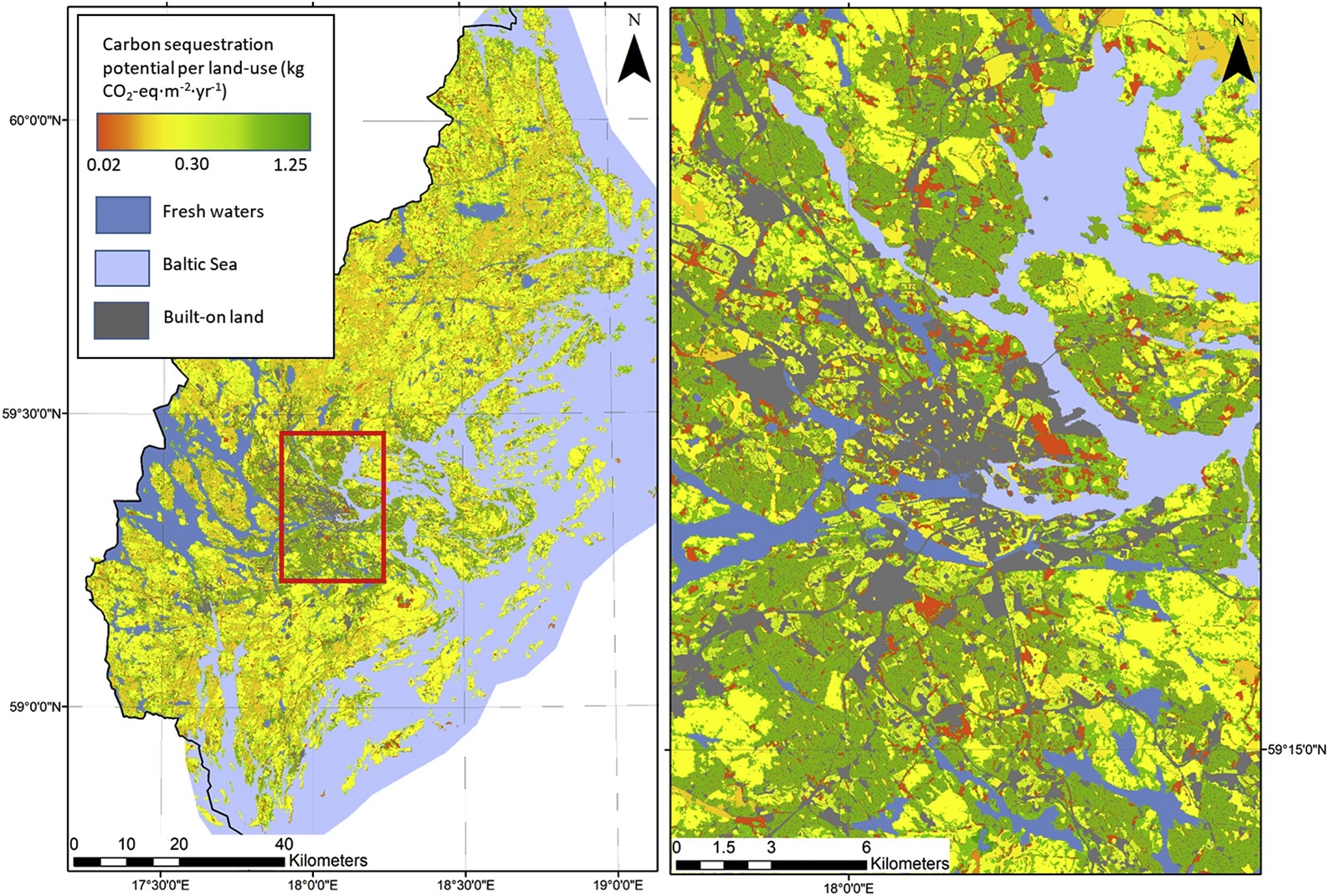Carbon-neutral cities
Coupled social-ecological systems modeling of urban land-use changes, greenhouse gas emissions, and management policies
Urban-regional development is dynamic and complex. To become carbon neutral, urban systems need to be efficient in energy and transportation and reduce internal greenhouse gas (GHG) emissions from transport, construction, use of buildings, and energy production, while also increasing carbon sinks and using carbon offsets. This is not easy and there is no simple protocol to follow. In this project, we will extend social-ecologicalsystems modeling to quantify and project GHG emissions from complex urban environments under various human activity scenarios. We will use an integrated support tool in planning scenarios for urban-regional development (case: Stockholm region). This open source tool, Land use Evolution and lmpact Assessment Model (LEAM), couples urban land use policy and practice, and associated GHG emissions and feedbacks, allowing for policy scenario analysis and stakeholder engagement and education. The coupled modeling framework uses regional planning data to inform: i) a land-use model that accounts for socio-economic impacts and forecasts urban residential and commercial land-use growth; and ii) a dynamic, spatial-explicit model tool for assessment of GHG emissions (including carbon sinks, storage potential, buildings, and transportation) to spatially identify high-emission areas to target in climate mitigation and urban policies. Outputs from the project will be used in a decision support tool for communication, policy-making, and scenario testing.
Project description
This project is based on and will also further develop a network of researchers, regional and city planners, and other stakeholders in co-creation of knowledge and opportunities for collaborative learning in the regional planning context for carbon- neutral cities. The proposed project is a transdisciplinary cooperation between Royal Institute of technology (KTH), Stockholm University (SU), the Department of Urban and Regional Planning and Landscape Architecture at UIUC, and the Growth and Regional Planning Administration (TRF) for the Stockholm Region. It falls seamlessly within the LEAM Stockholm development underway in a collaboration between TRF and Sustainable Development, Environmental Science and Engineering (SEED), Royal Institute of Technology (KTH). It will build on ongoing work by SU, UIUC, TRF, and KTH using the LEAM Stockholm model as a basic platform to support sustainable development of the Stockholm region. This transdisciplinary cooperation provides core expertise in the fields of planning, environmental and sustainability assessment, and spatial land-use modelling. The project will apply collaborative learning in the process of developing planning support for urban development, applied to the Stockholm Region, contributing to enhanced knowledge and understanding of the complex urban system.
The general aim of the proposed project is to initiate a collaborative learning process and to develop and apply a coupled social-ecological modeling approach to identifying complex interactions, and their effects and feedbacks, in urbanization and associated land-use changes and climate change. The coupled modeling framework uses i) regional planning data to inform a land-use model that accounts for socio-economic impacts and forecasts urban residential and commercial land-use growth and ii) a dynamic, spatial-explicit tool for greenhouse gas (GHG) emissions assessment (including carbon sinks, storage potential, and the building and transportation sectors).

